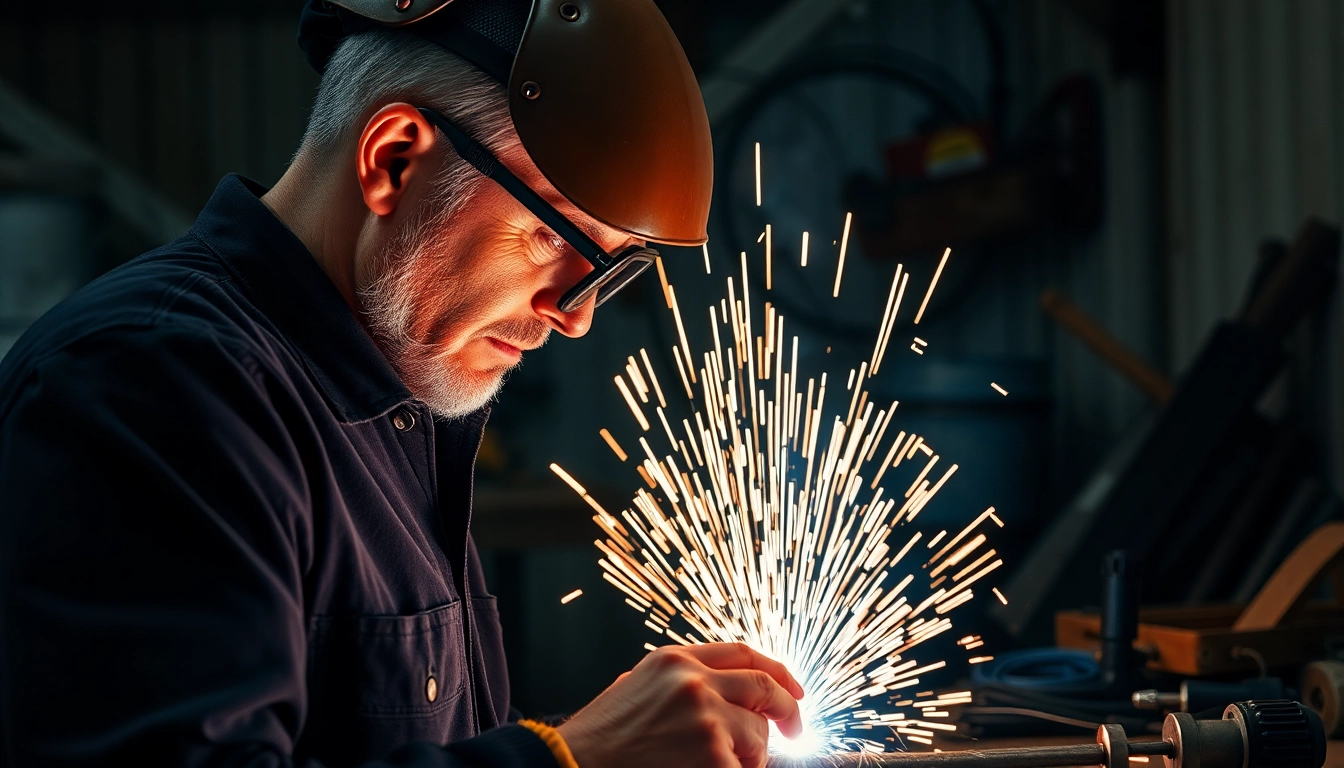Introduction to Welding Supplies
Welding is a critical skill in various industries, from construction to manufacturing, and the right welding supplies can significantly impact the quality and efficiency of work. The importance of having the right tools and materials cannot be overstated; they determine not only the safety of the welder but also the structural integrity of the final product. This comprehensive guide will delve deep into the world of welding supplies, their importance, and how to choose and maintain them effectively.
What Are Welding Supplies?
Welding supplies encompass a wide array of tools, materials, and safety equipment used in the welding process. These can be broadly categorized into protective gear, welding equipment, and consumables. From protective helmets that shield welders from harmful sparks and UV rays to welding machines that execute the actual joining of materials, each component plays a vital role in ensuring successful welding operations.
The Importance of Quality Supplies
The quality of welding supplies directly influences the outcome of welding projects. High-quality equipment and consumables lead to better welds, increased productivity, and safer working conditions. In contrast, inferior supplies can result in weld defects, equipment malfunction, or worse, safety incidents. Moreover, investing in quality tools reduces long-term costs through decreased maintenance and replacement needs.
Overview of Various Welding Types
Welding comes in several forms, each requiring specific supplies:
- Arc Welding: Uses electricity to melt and join materials. Supplies include welding rods, electrodes, and protective gear.
- MIG Welding: Involves a continuous wire feed that melts and joins metals. Key supplies include a MIG welder, wire feed, and shielding gas.
- TIG Welding: Utilizes a non-consumable tungsten electrode. Essential supplies are TIG torches, tungsten electrodes, and filler rods.
- Stick Welding: Use of a consumable electrode coated in flux. Supplies consist of stick electrodes and a power source.
Essential Categories of Welding Supplies
Protective Gear
Welders face numerous hazards, such as extreme heat, molten metal, and toxic fumes. Protective gear is indispensable for the safety of the welder. Essential items include:
- Welding Helmets: Protects the face and eyes from sparks, heat, and UV radiation.
- Welding Jackets: Flame-resistant clothing that protects against sparks and heat.
- Welding Gloves: Durable gloves designed to withstand heat and provide dexterity.
- Respirators: Essential for welding processes that generate harmful fumes.
- Safety Boots: Steel-toe shoes to protect feet from heavy objects and heat.
Welding Equipment
The equipment used in welding varies according to the type of welding performed. Common welding machines include:
- MIG Welders: Ideal for both beginners and professionals seeking speed and efficiency.
- TIG Welders: Preferred for precision work on thin materials.
- Stick Welders: Excellent for outdoor work and various types of metals.
- Plasma Cutters: Used for cutting materials quickly with precision.
Consumables and Accessories
These items are often critical to the welding process and include:
- Welding Electrodes: Used in various welding processes, including stick and TIG welding.
- Welding Filler Metals: Added in MIG and TIG welding for joining workpieces.
- Welding Cups and Nozzles: Used in TIG welding to protect the weld area from contamination.
- Welding Wire: Essential for MIG welding, providing a strong bond.
- Welding Rods: Utilized mostly in stick arc welding for joining metals.
How to Choose the Right Welding Supplies
Factors to Consider When Selecting Supplies
Selecting the right welding supplies requires consideration of several factors:
- Welding Process: Choose supplies according to the specific welding technique you will employ.
- Material Type: Different materials require different approaches. For example, aluminum welding necessitates a unique set of rods and wires.
- Welder Skill Level: Beginners may require more user-friendly equipment and safety gear.
- Budget: Consider how much to invest in tools without compromising quality.
Brand Comparisons and Recommendations
Choosing brands is essential for ensuring quality. Some reputable brands in the welding supplies arena include:
- Miller Electric: Known for high-performance welders and accessories.
- Lincoln Electric: Offers a wide range of machines suitable for all skill levels.
- ESAB: Provides reliable equipment and consumables tailored for various processes.
Researching user reviews and product comparisons can further refine your choices.
Common Mistakes to Avoid
When selecting welding supplies, avoid the following pitfalls:
- Overlooking Safety Gear: Skimping on safety equipment can lead to serious injuries.
- Not Matching Materials and Tools: Using the wrong type of electrode or filler can compromise the weld.
- Inadequate Research: Failing to read reviews or seek expert advice can result in poor purchases.
- Ignoring Maintenance Needs: Not considering regular upkeep can lead to equipment failures and safety hazards.
Where to Buy Quality Welding Supplies
Online Retailers vs. Local Stores
Deciding between purchasing welding supplies online or from local stores can depend on several factors:
- Convenience: Online shopping offers a wider range of products at the comfort of your own home.
- Expert Advice: Local providers may offer personal interactions and professional guidance.
- Shipping Costs: Factor in additional costs if buying online, especially for heavy equipment.
Tips for Getting the Best Deals
To save money while acquiring quality welding supplies, consider these tips:
- Compare Prices: Review multiple websites and stores to find the best deals.
- Look for Discounts: Search for promotional offers, bulk discounts, or clearance sales.
- Join Loyalty Programs: Some stores offer rewards programs or membership benefits.
Assessing Supplier Reputation
Before making a purchase, it’s crucial to assess the supplier’s reputation. Steps include:
- Reading Reviews: Customer feedback can provide insight into product quality and service effectiveness.
- Checking Certifications: Ensure suppliers meet industry standards and regulations.
- Engaging in Communities: Welding forums, social media groups, and local welding associations can provide recommendations.
Maintenance and Care of Welding Supplies
Storage Tips for Longevity
Proper storage of welding supplies can extend their lifespan:
- Dry Environment: Store supplies in a dry area to prevent rust or degradation.
- Organized Space: Keeping tools organized minimizes damage and easy access.
- Safe Locations: Ensure that hazardous materials like gases are stored according to regulations.
Regular Maintenance Practices
Routine maintenance is essential for ensuring that welding tools and equipment operate properly:
- Inspection: Regularly check equipment for wear or damage.
- Cleaning: Clean the machines and accessories after use to prevent build-up and blockages.
- Testing: Conduct periodic tests to ensure that machines are functioning optimally.
Signs of Wear and When to Replace
Knowing when to replace tools and supplies is paramount:
- Visual Damage: Inspect for cracks, discoloration, or deformities.
- Poor Performance: If machines are not performing as expected, it may be time to replace or repair.
- Excessive Wear: Consumables that are excessively worn down should be replaced to maintain quality.
In conclusion, welding supplies are a foundational element of any successful welding project. By understanding the various types and categories of supplies, carefully selecting quality tools, and maintaining them properly, welders can ensure both safety and efficiency. Investing in the right equipment not only enhances the quality of work but also promotes a safer working environment, making it an essential focus for anyone involved in welding.



